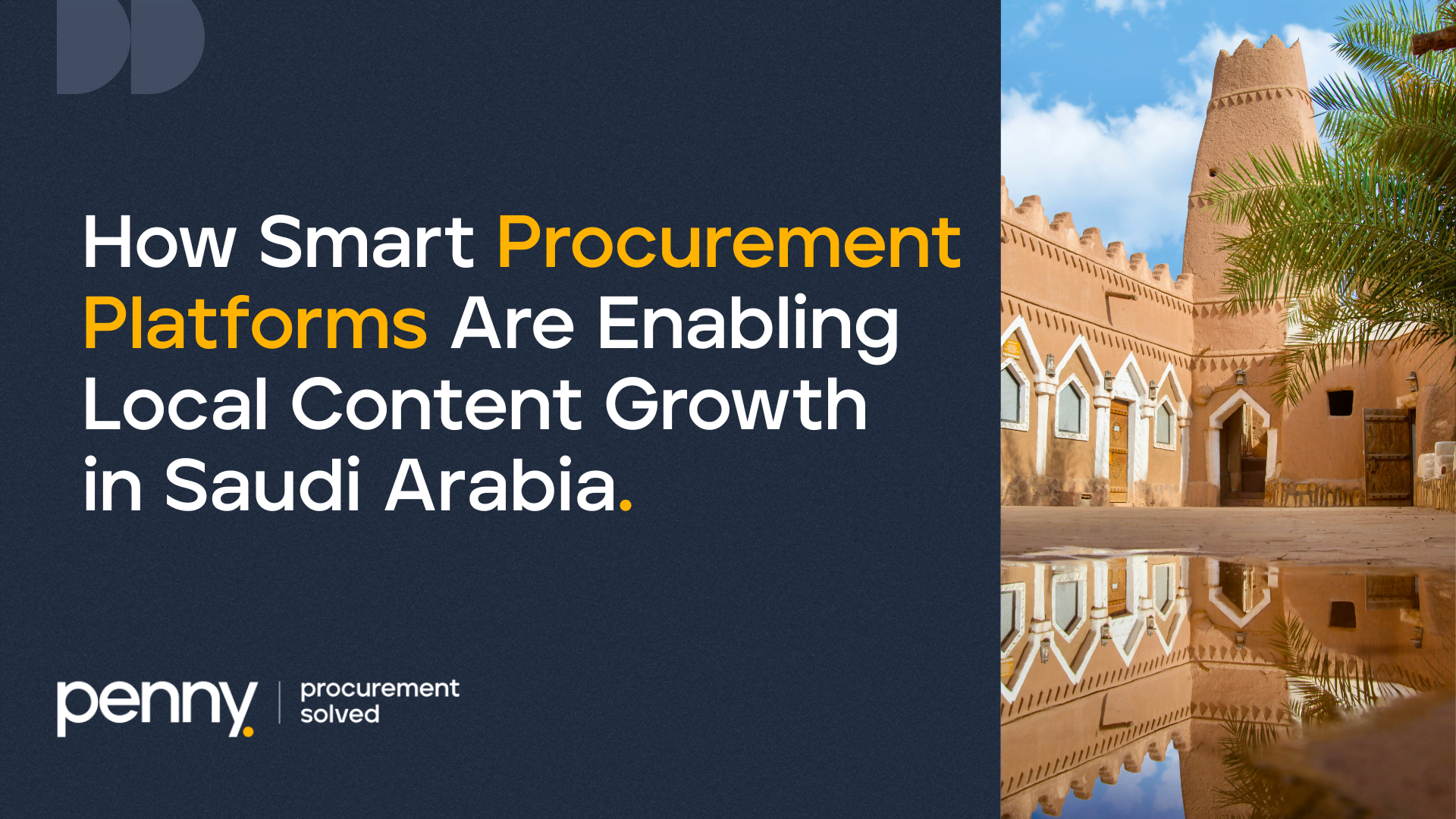
When Saudi Arabia announced Vision 2030, one of its most ambitious goals was to diversify the economy and strengthen local industries. Central to this transformation is the concept of local content ensuring that national projects and procurement spending directly contribute to local businesses, manufacturing, and talent.
But for years, achieving measurable progress on local content was difficult. Tracking supplier origins, classifying spending, and ensuring compliance with LCGPA standards often required extensive manual effort and complex coordination across ministries and private enterprises.
Now, technology is changing everything. Smart procurement platforms are emerging as the most effective enablers of local content growth bridging the gap between policy and execution, and turning compliance into opportunity.
The Rise of Local Content as a Strategic Priority
Local content is no longer a checkbox in public tenders; it is a national economic strategy. The Local Content and Government Procurement Authority (LCGPA) has made it clear that increasing the participation of Saudi suppliers and manufacturers is essential for building economic resilience, reducing import dependency, and creating jobs.
Today, every government entity and large enterprise is expected to measure and improve its local content score. This includes tracking Saudi workforce participation, locally manufactured goods, and contracts awarded to national suppliers.
However, as many organizations quickly discovered, doing this manually is almost impossible at scale. The process requires consistent supplier data, verified classifications, and continuous reporting all of which depend on technology.
Where Manual Systems Fall Short
Many procurement teams still rely on spreadsheets, legacy ERPs, and disconnected supplier databases. These systems were never designed to classify spending by origin or measure local value.
The consequences are familiar:
- Data inconsistency between departments
- Inaccurate local content reporting
- Lost opportunities to onboard qualified Saudi suppliers
- Inability to identify spend categories with localization potential
In short, organizations end up spending more time collecting data than acting on it.
Without digital procurement systems, leaders lack the visibility they need to make strategic decisions such as when to substitute imports with local suppliers or how to optimize contract awards for local impact.
The Digital Shift: Turning Policy into Practice
Smart procurement platforms like Penny are solving this challenge by embedding local content tracking directly into the procurement workflow. Instead of treating it as an external compliance task, it becomes a built-in capability.
When buyers raise purchase requests, the system automatically classifies whether a supplier is local or international, calculates the local value contribution, and aggregates data for LCGPA reporting.
This automation transforms local content management from a reactive process into a proactive strategy. It allows organizations to plan procurement in alignment with local content targets rather than scrambling to measure results afterward.
Local Content Baseline: Visibility that Drives Impact
Penny’s Local Content Baseline is one of the first regional tools designed specifically for this mission. It provides enterprises and government entities with full visibility over their supplier base and local content performance.
Here is how it works:
- Every supplier in the system is automatically tagged with a local or international classification.
- The platform tracks spend distribution across categories, projects, and suppliers.
- Dashboards display real-time local content performance against targets.
- Reports can be exported directly for LCGPA compliance submission.
The result is unprecedented clarity. Decision-makers can see exactly where their budgets are going, how much of their spend supports Saudi suppliers, and what actions can improve their local content score.
Beyond Compliance: Building the Saudi Supplier Ecosystem
Smart procurement platforms do more than help organizations comply; they accelerate the development of Saudi suppliers.
By centralizing supplier data, platforms like Penny create an environment where local vendors gain visibility across industries. This makes it easier for them to access opportunities, register for bids, and grow through consistent participation.
Moreover, digital procurement levels the playing field. Smaller Saudi suppliers that meet the standards can now compete with larger, established international firms. This inclusion strengthens the national ecosystem and supports entrepreneurship in key sectors such as construction, energy, and technology.
A Catalyst for Public–Private Collaboration
Local content growth is not the responsibility of the government alone. It depends on collaboration between ministries, state-owned enterprises, and the private sector.
With digital procurement, that collaboration becomes tangible. Shared systems enable the exchange of verified supplier data, standardized classification, and unified reporting methodologies.
For example, a large enterprise using Penny can synchronize its supplier information with government registries, ensuring that local content assessments are accurate and recognized by regulators.
This integration is helping to create a transparent and interconnected procurement ecosystem across Saudi Arabia.
Empowering Decision-Makers with Real Data
One of the biggest breakthroughs enabled by smart procurement platforms is the ability to make data-driven decisions.
Before automation, local content reporting was often backward-looking organizations would realize too late that their spending did not align with national targets.
Now, leaders can forecast and adjust in real time. If a project shows a low local content ratio, procurement teams can instantly identify categories where local suppliers exist but were underutilized.
This predictive capability turns local content management into a competitive advantage rather than a compliance burden.
Why Local Content and Digital Procurement Are Inseparable
As Saudi Arabia pushes forward with Vision 2030, the success of its local content agenda depends on one critical factor: data transparency.
Without modern procurement systems, the country cannot measure or improve localization effectively. But with them, every riyal spent becomes traceable, optimizable, and strategically aligned with national priorities.
Digital procurement is not just supporting local content it is enabling it.
The Road Ahead
Saudi Arabia’s commitment to local content is clear and irreversible. What began as a policy has now evolved into a nationwide movement to empower local industry and talent.
In this journey, technology is not optional. It is the bridge between intention and impact. Smart procurement platforms like Penny are already proving that automation, analytics, and visibility can turn the vision of local content into measurable progress.
The next phase of Saudi economic transformation will not be defined by policy alone but by how effectively technology turns that policy into action.
Call to Action
If your organization is working toward higher local content targets or LCGPA compliance, the right technology can accelerate your progress.
Book a discovery session with Penny to see how the Local Content Baseline helps enterprises and government entities measure, track, and improve local content performance with clarity and precision.

